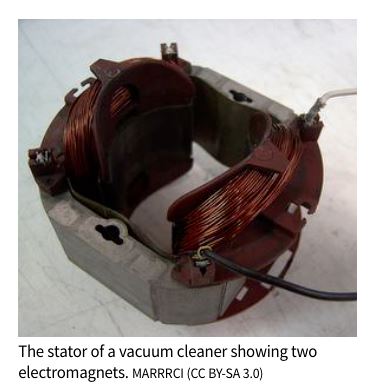Note4Students
From UPSC perspective, the following things are important :
Prelims level: Electromagnetism, Faraday and his contributions

Why in the News?
Recently Scientists have designed a magnetic resonance imaging (MRI) scanner that costs a fraction of existing machines, setting the stage for improving access to this widely used diagnostic tool. So we need to know about the Electromagnet.
What is an Electromagnet?
- Invented in 1824 by William Sturgeon, electromagnets revolutionised technology.
- Sturgeon was an English physicist and inventor who discovered that wrapping a coil of wire around a piece of iron and passing an electric current through the wire produced a magnetic field.
- Electromagnets are used in Loudspeakers for sound reproduction, Motors for mechanical movement., and MRI machines for medical imaging, etc
How Electromagnets Work?
- Electric current flowing through a wire generates a magnetic field around the wire.
- Coiling the wire enhances this magnetic field by concentrating it within the coil’s core.
- This configuration creates an electromagnet, where the strength of the magnetic field is directly proportional to the current flowing through the coil.
- The magnetic flux density so generated is measured in ‘Tesla’.
Enhancing Magnetic Strength with a Core
- Coiling the wire around a magnetic material (core), such as iron or steel:
- Amplifies the magnetic field produced by the electric current.
- Ferromagnetic materials like iron align their internal magnetic domains with the external magnetic field generated by the coil.
- This alignment significantly increases the overall magnetic strength of the electromagnet compared to a non-magnetic core.
Persistence of Magnetization
- It refers to the property of a material to retain a certain amount of magnetization even after the removal of an external magnetic field.
- Certain core materials exhibit retained magnetization even after the current ceases.
- This residual magnetism is useful in applications requiring sustained magnetic fields, such as:
- Superconducting electromagnets used in MRI machines, are capable of producing magnetic fields up to 30 Tesla.
- Research electromagnets like those used in particle physics, which require stable and powerful magnetic fields.
Who was Michael Faraday (1791-1867)?
Key achievements of Michael Faraday include:
|
PYQ:[2011] Microbial fuel cells are considered a source of sustainable energy. Why?
Which of the statements given above is/are correct? (a) 1 only (b) 2 and 3 only (c) 1 and 3 only (d) 1, 2 and 3 |
Get an IAS/IPS ranker as your 1: 1 personal mentor for UPSC 2024
